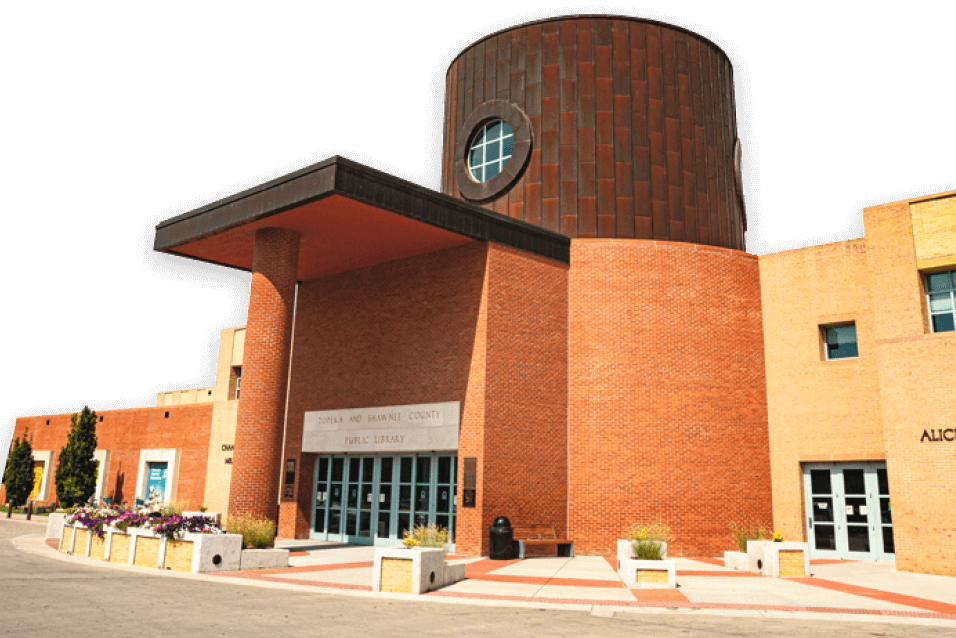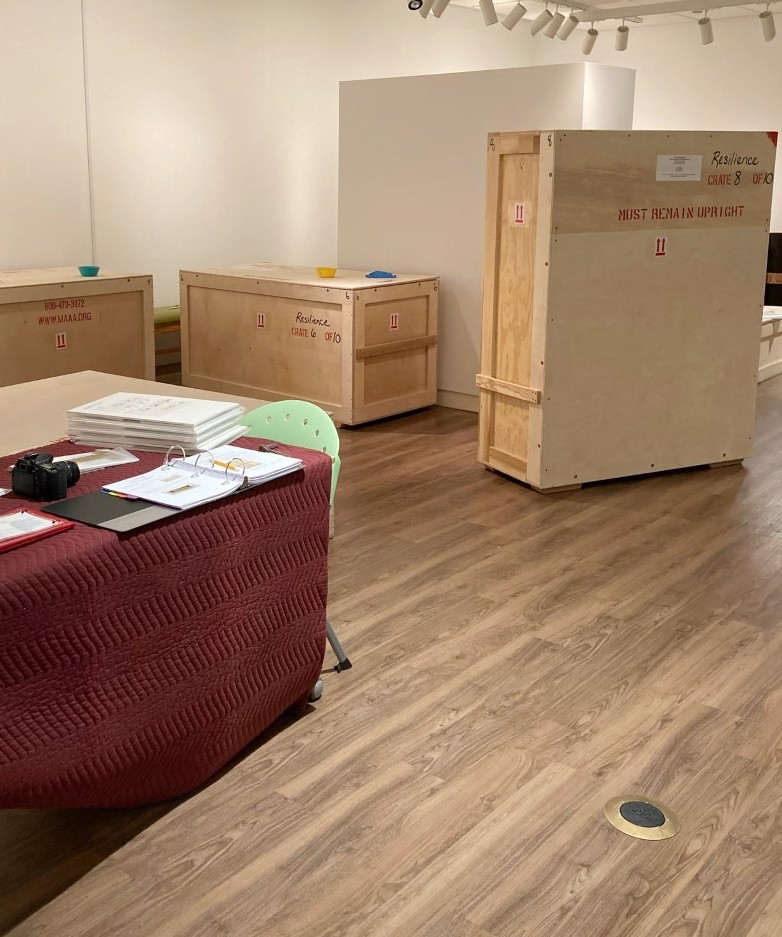Behind the Scenes: Installing a traveling exhibit
Hosting traveling exhibits gives our community the chance to see artwork they might not be able to see otherwise. Often we supplement exhibits we borrow with work from the library's art collection to add our own special library twist.
Here's a behind the scenes look at installing Resilience - A Sansei Sense of Legacy from ExhibitsUSA. This exhibit tells the story of the internment of Japanese Americans during World War II. It provides an opportunity to discover and experience the impact this historical event had and continues to have on many Americans. We are the first stop for this new traveling exhibit. See the exhibit before it closes on May 22, 2022,
The crates of artwork arrive
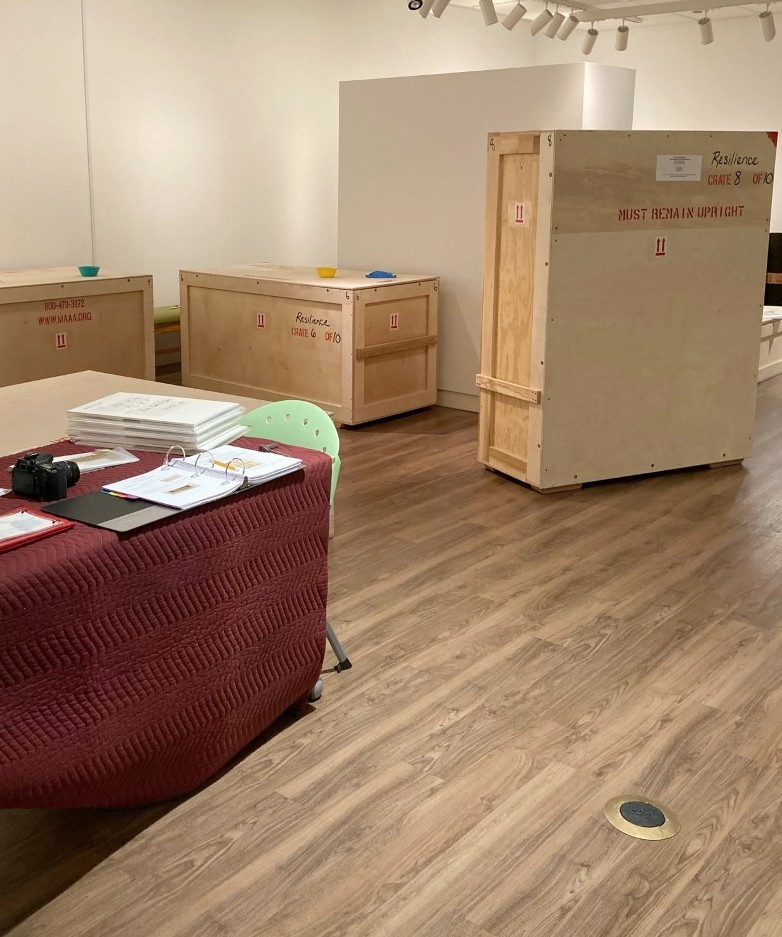 The artwork in traveling exhibits is expertly packed in heavy wood crates to minimize any chance of damage in transit. On delivery day gallery staff gather on the library's loading dock to anxiously await the truck. When the doors open we get our first glimpse of what awaits us. The Resilience exhibit has several very large pieces, which came in very large crates.
The artwork in traveling exhibits is expertly packed in heavy wood crates to minimize any chance of damage in transit. On delivery day gallery staff gather on the library's loading dock to anxiously await the truck. When the doors open we get our first glimpse of what awaits us. The Resilience exhibit has several very large pieces, which came in very large crates.Even when we check and double check the dimensions of the artwork, there can still be a few surprises. Kristine Aono's Daruma of Resilience should've fit in our elevator for a quick ride from the basement. However, we forgot to take into account that the frame around the elevator doors is smaller than the elevator itself.
Thanks to our facilities staff creative problem-solving, we loaded Daruma onto the library's box truck and drove it from the dock to the front doors. From there we used the hydraulic lift the Friends of the Library purchased for us (Thanks Friends!) to remove the artwork from the truck and roll it in through the front double doors. We are so fortunate to have wonderful facilities staff who are always willing to help with our odd requests.
Unpacking the crates
Now the moment we've all been waiting for – opening the crates! This is the first time we'll get to see the artwork "live" after looking at photos for the last couple of years while we've been planning for the exhibit. It's really tempting to tear open the crates, pull all the artwork out and start installing it. However, we must slow down and take a more methodical approach.
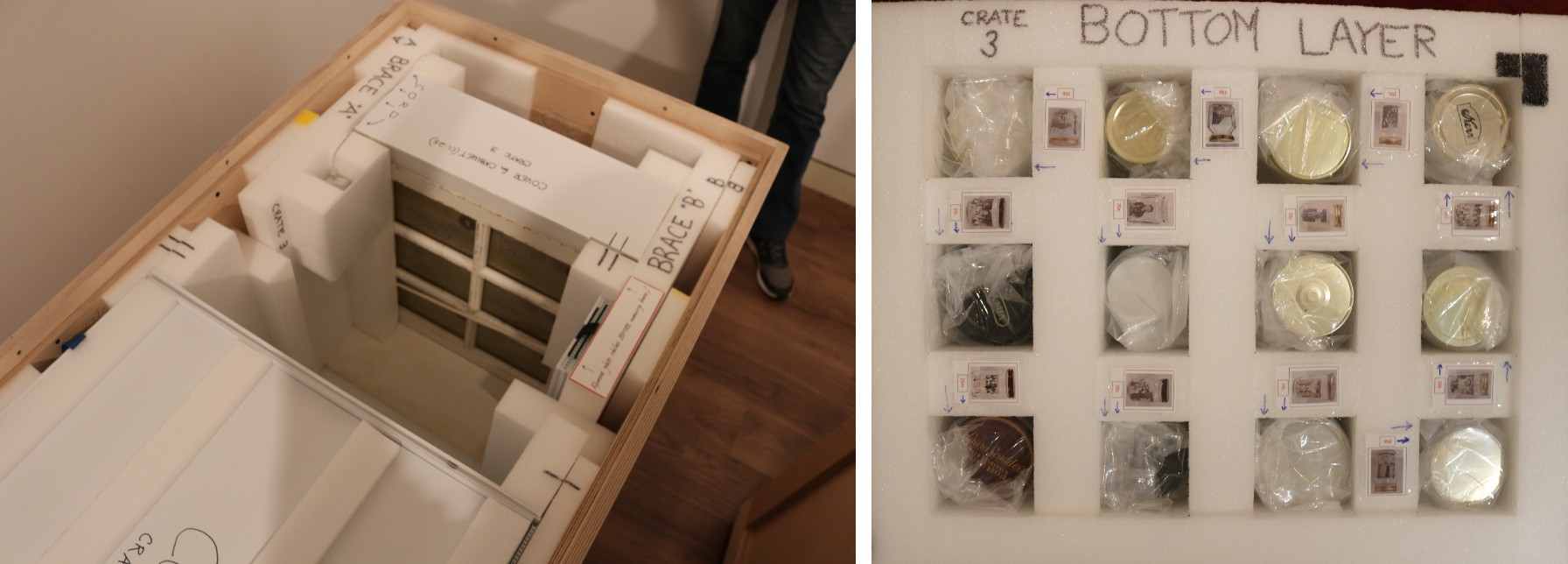
Each traveling exhibit we borrow comes with a binder. This binder contains all we need to know about the exhibit. First it has information about the artists and their artwork. Then instructions on how to display work that hangs from the ceiling. There are also instructions on artwork that ships in several pieces and needs to be assembled. Lastly, the binder includes detailed condition reports for all the artwork.
As we unpack the crates, we photograph every step of the process. This helps us remember how to re-pack everything when we're ready to ship the exhibit to the next venue. Photos also give us a record of any damage that isn't noted in the condition report.
Installing the exhibit
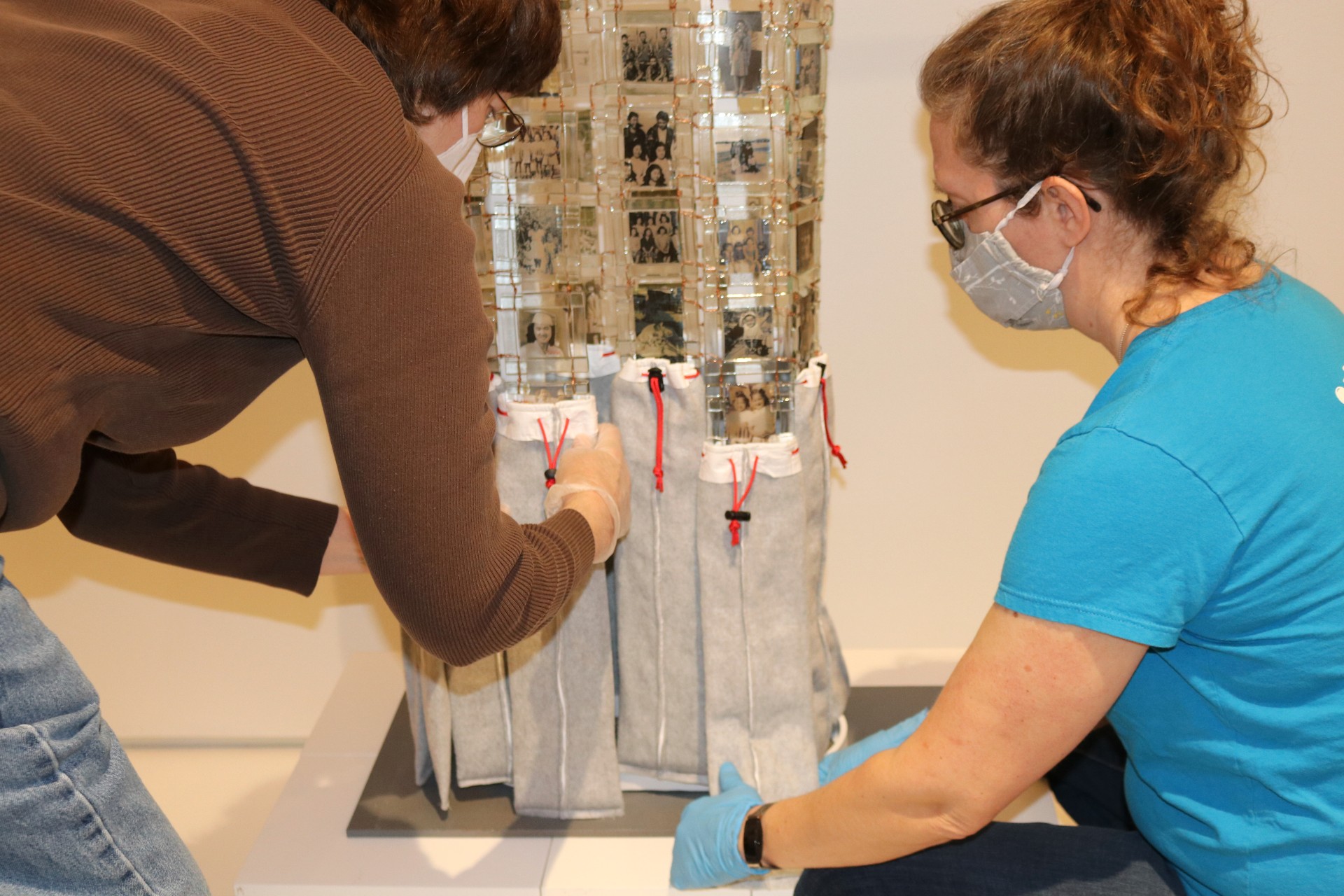
Unwrapping Reiko Fujii's "Detained Alien Enemy Glass Kimono"
While traveling exhibits come to us curated, the actual placement of the artwork in the gallery space is usually up to us. We use our scale model of the gallery space to decide what layout we should use with our movable walls and where each piece of art will go.
This installation planning was especially important with Resilience because several of the works are large and fragile. So they don't lend themselves well to being moved from wall to wall until we're happy with the placement. When you need to assemble a kimono made of small pieces of glass strung together with wire, you only want to do that once!
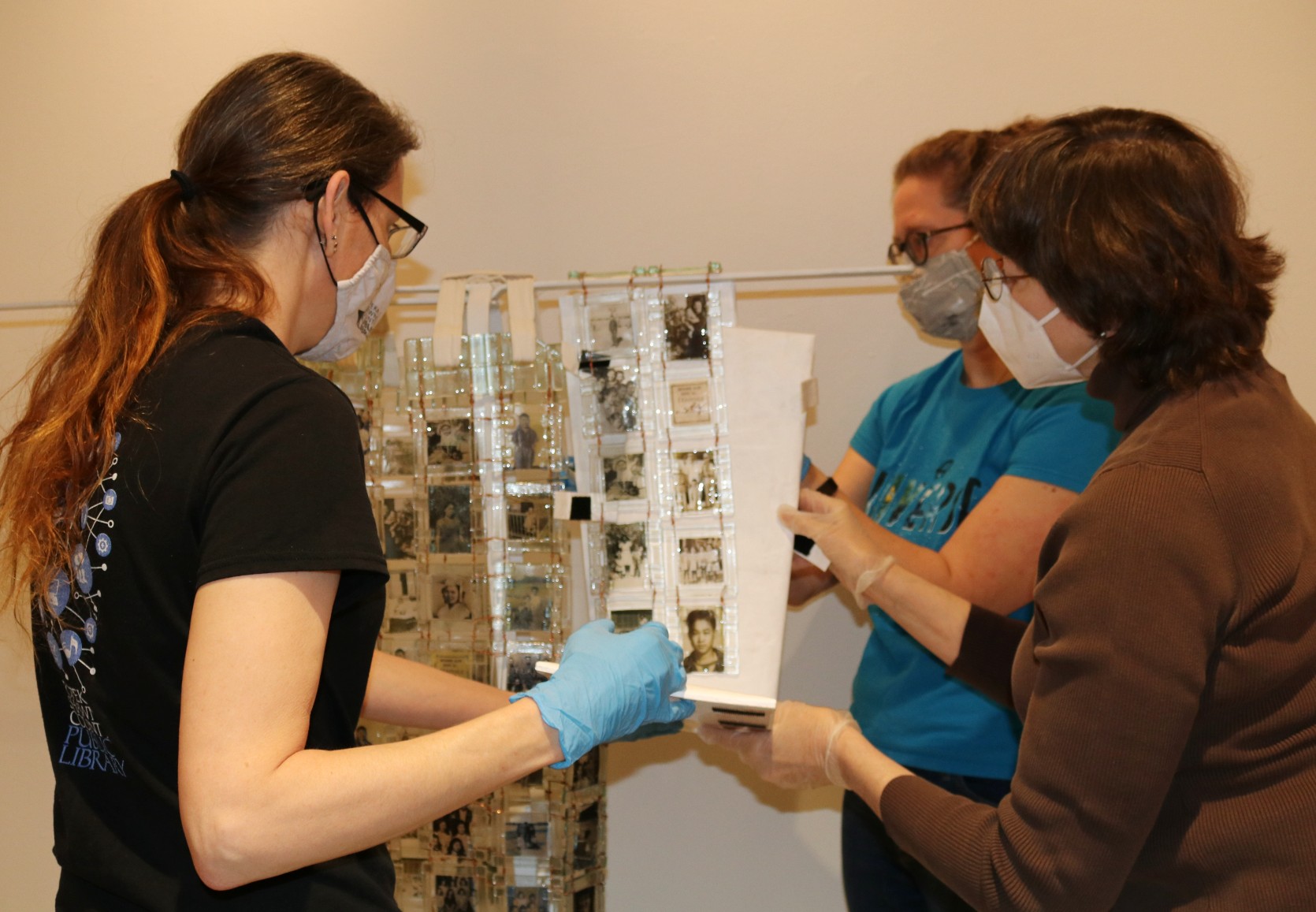 As with most of the traveling exhibits we borrow, we added our own library twist to this one. In the front part of the gallery, we put up tar paper and an army cot to give a sense of how living in the barracks at an internment camp might've looked.
As with most of the traveling exhibits we borrow, we added our own library twist to this one. In the front part of the gallery, we put up tar paper and an army cot to give a sense of how living in the barracks at an internment camp might've looked.Lawrence artist Roger Shimomura is included in the Resilience exhibit, so we supplemented the work we borrowed with the prints from his "Mistaken Identities" portfolio in the library's permanent art collection. For our Reed Studio,we planned art making projects for kids related to the themes in the exhibit and that highlight aspects of Japanese culture.
The end
Once a traveling exhibit closes, we carefully examine each work of art to compare it to the condition report. We then re-pack everything into those heavy duty wood crates and send the exhibit on to the next venue. Resilience - A Sansei Sense of Legacy is scheduled to travel until 2027 allowing many more people to experience this outstanding thought-provoking exhibit.
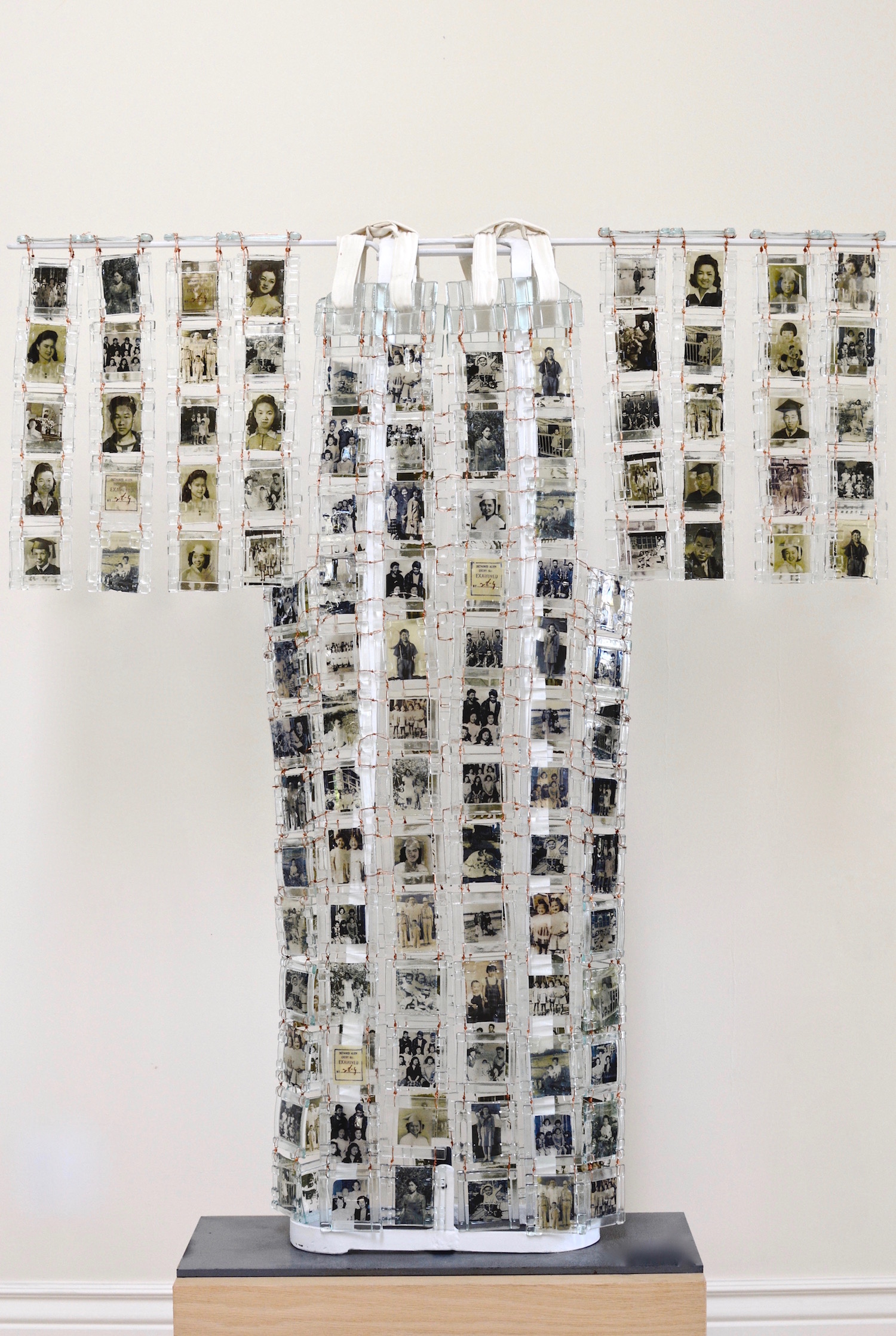
Reiko Fujii, "Detained Alien Enemy Glass Kimono," 2017


